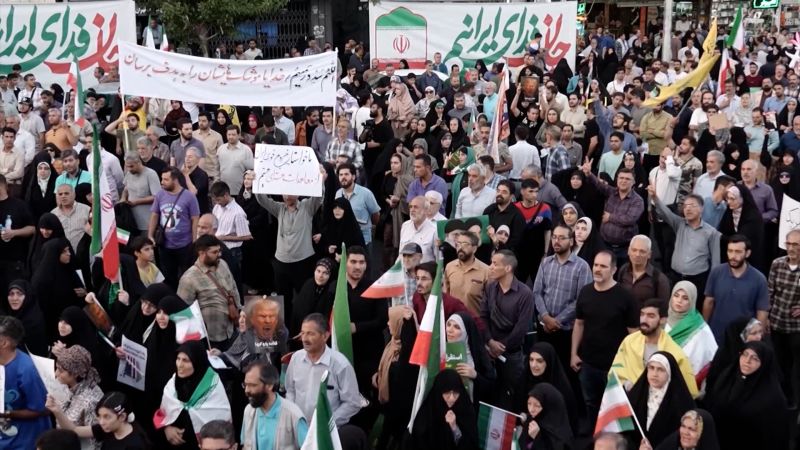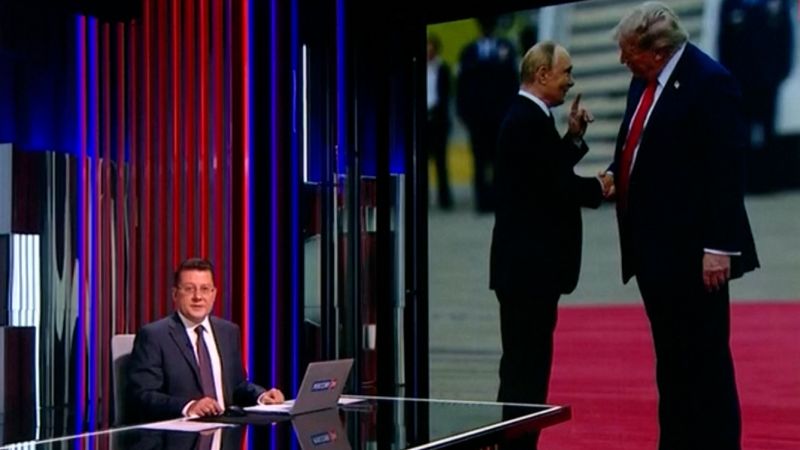On a tense Sunday morning in Tehran, the air was thick with emotion as thousands of Iranians took to the streets, fueled by a potent mixture of anger and defiance. The catalyst for this massive outpouring of public sentiment was the recent missile strikes launched by the United States against Iranian nuclear sites. These strikes, which have escalated an already fraught geopolitical situation, were met with fierce condemnation from Tehran’s leadership, who have vowed retaliation against what they characterize as an act of aggression.
As the sun climbed higher in the sky, casting a glaring light on the throngs of demonstrators, chants of ‘Death to America’ echoed through the streets, reverberating off the walls of the surrounding buildings. The protests were not merely spontaneous displays of anger; they were underscored by a long history of U.S.-Iranian tensions that have plagued the region for decades. The demonstrators, a blend of students, workers, and families, held aloft placards emblazoned with fiery slogans, and their resolute faces reflected a collective determination not only to voice their discontent but also to unite against what they see as a foreign threat to their sovereignty.
The protests unfolded in several key locations throughout the capital, with gatherings reported outside government buildings and in public squares that historically serve as sites of political expression. CNN’s Fred Pleitgen, reporting live from the heart of Tehran, captured the intensity of the scene, noting the palpable sense of solidarity among protestors who have been galvanized by their leaders’ rhetoric. Iran’s Supreme Leader, Ayatollah Ali Khamenei, had previously declared that the nation would respond decisively to any attack, and this promise of retaliation has only served to inflame public sentiment.
To understand the significance of these protests, one must consider the broader context of U.S.-Iran relations. Since the 1979 Islamic Revolution, when the U.S. embassy in Tehran was stormed and diplomats were taken hostage, relations have been fraught with mutual distrust and animosity. Over the years, sanctions, diplomatic standoffs, and military posturing have characterized the relationship. The recent missile strikes represent a significant escalation, as they directly target Iran’s nuclear capabilities, which the U.S. and its allies fear could lead to the development of nuclear weapons.
Experts suggest that the strikes may have been motivated by intelligence reports indicating imminent threats from Iranian nuclear sites. However, the Iranian government has categorically denied any malevolent intent regarding its nuclear program, insisting that it is solely for peaceful purposes. This denial is often met with skepticism in the West, where the specter of a nuclear-armed Iran looms large. The strikes have not only intensified the conflict but also reignited debates among policymakers about the efficacy of military intervention versus diplomatic engagement.
As the protests continued, analysts turned their attention to the implications of this public outcry for both domestic and international politics. The Iranian leadership, while facing internal pressures such as economic hardship and social unrest, has often used external threats to rally support and consolidate power. The current situation appears to be no different; the government is leveraging the U.S. strikes to strengthen national unity and distract from internal challenges. Many Iranians, beleaguered by a sluggish economy and high inflation rates, find solace in the idea of a common enemy, and the protests serve as a critical outlet for their frustrations.
Moreover, the protests are not limited to expressions of anger; they represent a complex interplay of national pride, historical grievances, and a desire for agency in the face of foreign intervention. The demonstrators, many of whom are young and educated, are acutely aware of the implications of their actions. While they rally against U.S. military aggression, they also convey a deeper yearning for recognition and respect on the global stage.
As the day wore on, the atmosphere in Tehran remained charged, with emotions running high. The streets were filled with chants calling for unity and resistance, while the government maintained a firm grip on the narrative, asserting that any retaliation would be swift and decisive. This rhetoric serves to bolster the leadership’s stance domestically, reinforcing the idea that they are capable of protecting the nation against foreign threats.
Internationally, the strikes and subsequent protests have drawn varied responses. Some Western nations have expressed support for the U.S. actions, framing them as necessary measures to prevent nuclear proliferation. Conversely, regional powers have reacted with caution, understanding that a volatile Iran could destabilize the already fragile balance of power in the Middle East. Countries like Russia and China, both allies of Iran, have condemned the strikes, warning against further escalation and advocating for renewed diplomatic efforts to resolve the crisis.
The protests in Tehran are also emblematic of the broader struggle among Iranians to navigate their identity in a complex world. While many protestors express unwavering support for their government, others are caught in a dichotomy of wanting to preserve national pride while simultaneously yearning for reform and openness. This nuanced perspective is often lost in the black-and-white portrayals of the Iranian populace, which can oversimplify the diverse opinions that exist within the country.
As night fell in Tehran, the chants began to fade, but the resolve of the demonstrators remained palpable. The protests were a reminder that the people of Iran are not mere spectators in the unfolding geopolitical drama. They are active participants, shaping their narrative and conveying their aspirations for the future. The promise of retaliation from their leaders is not just a political maneuver; it is a reflection of the collective identity that has been forged through years of struggle and resilience.
Looking ahead, the international community watches closely as the situation develops. The potential for further military action looms large, and the Iranian government’s response to the U.S. strikes will likely shape the course of future negotiations, if any are to occur. The protests may serve to embolden the Iranian leadership, but they also highlight a critical juncture for the nation, one that could lead to either greater isolation or an opening for dialogue, depending on how both Tehran and Washington choose to navigate this turbulent chapter in their history. As the world grapples with the implications of these events, the voices of the Iranian people continue to resonate, calling for recognition, respect, and a future that honors their sovereignty while engaging with the realities of the global order.
Continue reading the complete article on the original source



